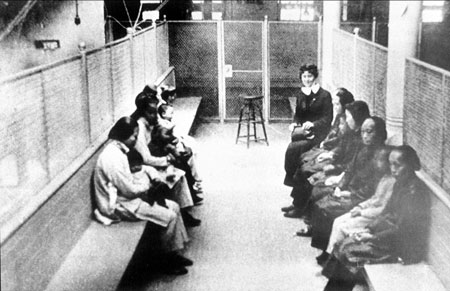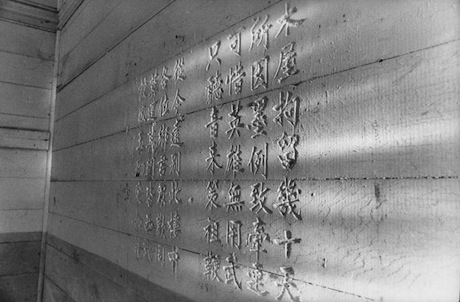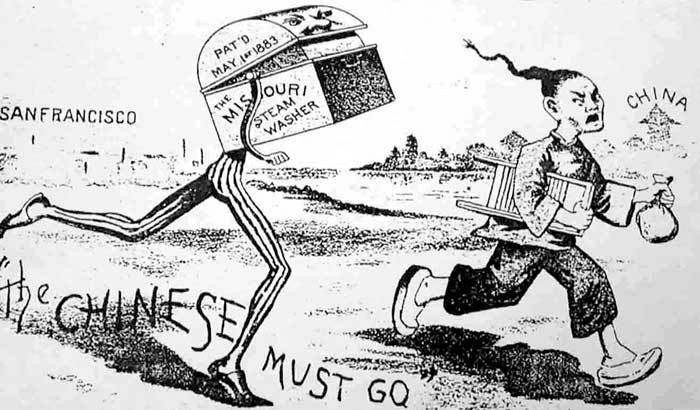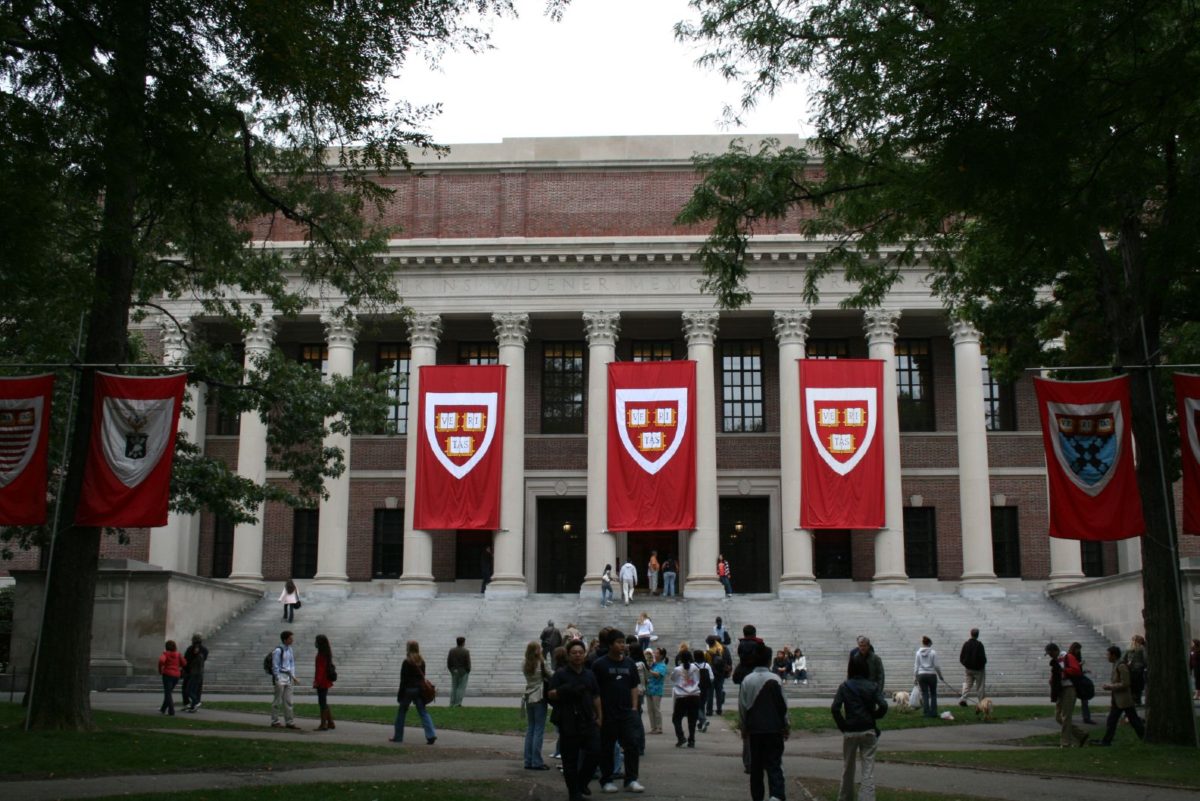The first Asians to arrive in the Americas are believed to be Filipino sailors who landed in North America as far back as the late 1500’s, and who famously established a small settlement in Louisiana in the 1700’s. However, one of the largest influx of Asian migrants to America in the 19th century was comprised of Chinese labourers, merchants and students who starting in the 1820’s with the establishment of trade between the US and Asia embarked on the dangerous journey from China to the western shores of the Americas.
Chinese labourers — predominantly men — traveled to the United States throughout the 19th century, in addition to labourers from Japan, Korea and the Phillipinnes; all were enticed to make the dangerous ocean journey by promises of jobs or education in what the Chinese dubbed the Gold Mountain. In truth, these Asian labourers, or “coolies” as they were pejoratively called, were brought in under exploitative contracts as indentured labourers and found themselves working for bare subsistence wages as part of the manual workforce that sustained the economies of Hawaii and the Southwest. As a cheap source of labour, they worked in sugar plantations and in other agricultural positions, and were essential in completion of the western lines of the Transcontinental Railroad.
Despite early excitement that greeted Asian American immigrants, for most of the 19th century, Asian American labourers found themselves despised as invaders that threatened to erode American culture and economic opportunities, and thus targeted by laws designed to minimize their integration into American society. Starting in 1862, California imposed a monthly head tax on every Chinese in the state, and other laws excluded Chinese residents from living in most residential areas, resulting in the formation of Chinatown ethnic enclaves. Chinese immigrants, as well as other Asian immigrants, were also routinely victimized by vigilante mobs; they were run out of their homes, robbed, and even murdered.
By May 6, 1882, the federal government passed the Chinese Exclusion Act, an immigration law that codified Yellow Peril fears by functionally banning all further immigration from China. This law stood for nearly 60 years.

In remembering the 1882 Chinese Exclusion Act, we must remember that it was not the first effort to bar Chinese immigration into this country by law. The Page Law of 1875, for example, was passed nearly a decade prior to the 1882 Chinese Exclusion Act that effectively halted entry into the United States for all Asian women, under the presumption that all Asian women were arriving to work as prostitutes and were consequently a threat to America’s moral fabric. Other laws like the Alien Land Law and ordinances that fined Chinese immigrants for wearing their hair in queues made life in America exceptionally difficult for these immigrants.
Passage of the 1882 Chinese Exclusion Act is significant because it was the first exclusionary immigration law in America’s history, effectively stopping all Chinese immigration and freezing the nation’s Chinese population in its track for the next 60 years. The law was renewed multiple times until it was finally repealed by the Magnuson Act of 1943. It was wildly popular, particular among America’s labour unions, who viewed Chinese “coolie” labour as significant competition for traditionally “White man’s” work.
Similar anti-Asian laws were passed that targeted other Asian ethnicities. The Gentleman’s Agreement of 1907 effectively stopped Japanese migration to the United States. The Immigration Act of 1924 barred all immigration from most parts of Asia. Canada, too, had a version of the Chinese Exclusion Act: in 1885, Canada passed a law that imposed a prohibitive head tax on all new Chinese immigrants and in 1923 passed the Chinese Immigration Act which like its American counterpart of 1882 halted all Chinese immigration into Canada.
The 1882 Chinese Exclusion Act, and the anti-Asian exclusionary immigration laws that followed in its wake, left an indelible mark on the Asian American population. Acutely, these laws stopped virtually all legal entry of Asian migrants into this country, freezing in time a virtual bachelor society of Asian Americans who could neither leave America (without being unable to re-enter) or severing ties with their families. It was in these predominantly male societies, isolated from Asia and ostracized from the rest of American society, that cultural traditions like the sport of 9-Man took root. Some of this nation’s first undocumented immigrants were Chinese “paper sons” who took advantage of a loophole following the great 1906 San Francisco earthquake to attempt entry into the U.S. using forged documents as the purported sons of native-born Chinese Americans.

This half-century of stymied immigration also fundamentally altered the course of Asian Americana. Without the ability to marry (miscegenation also being illegal at the time) or to bring their Asian families into America, few Asians who were able to enter the United States prior to, or during, the years of the 1882 Chinese Exclusion Act were able to create a generational presence in this country; this sustains the myth of Asian Americans as a young racial community in this country despite our presence in this country — in small but significant numbers — since its inception.
Today, Asian Americans are the fastest growing racial group (at 46% annually); for most Chinese Americans, our presence in this country is thanks almost entirely to the repeal of the 1882 Chinese Exclusion Act and the subsequent passage of the 1965 Immigration & Nationality Act, which abolished immigrant quotas based on “national origins” and opened the doors to immigration from virtually all Asian countries. In 2011, the US Senate passed a resolution expressing “regret” for the 1882 Chinese Exclusion Act; the House passed a similar resolution in 2012.
The legacy of the Chinese Exclusion Act reminds us of the broad impacts of immigration policies on the racial landscape of America, and consequently its culture and politics. While the 1965 Immigration Act was of landmark importance immigration into this country is still prohibitively complex and inefficient, leaving most applicants languishing in administrative limbo. Meanwhile, deportation rates of non-violent undocumented immigrants has doubled in the last decade.
As we contemplate 132 years since the Chinese Exclusion Act, I urge you to take a minute to advocate on behalf of comprehensive immigration reform. It is our responsibility to remember the devastating impact of bad immigration policy on our community and other immigrant populations throughout this nation’s history, and to remain committed to never letting such racist and exclusionary laws be passed ever again.
To that end, one of the priorities of the AAPI community should be consistent advocacy on behalf of common sense, efficient immigration policies that will benefit all current and hopeful Americans.
Act Now! As just one example of how you can work towards comprehensivie immigration reform: 18MillionRising continues to advocate on behalf of the #ElPaso37 — do your part by sharing their story.


